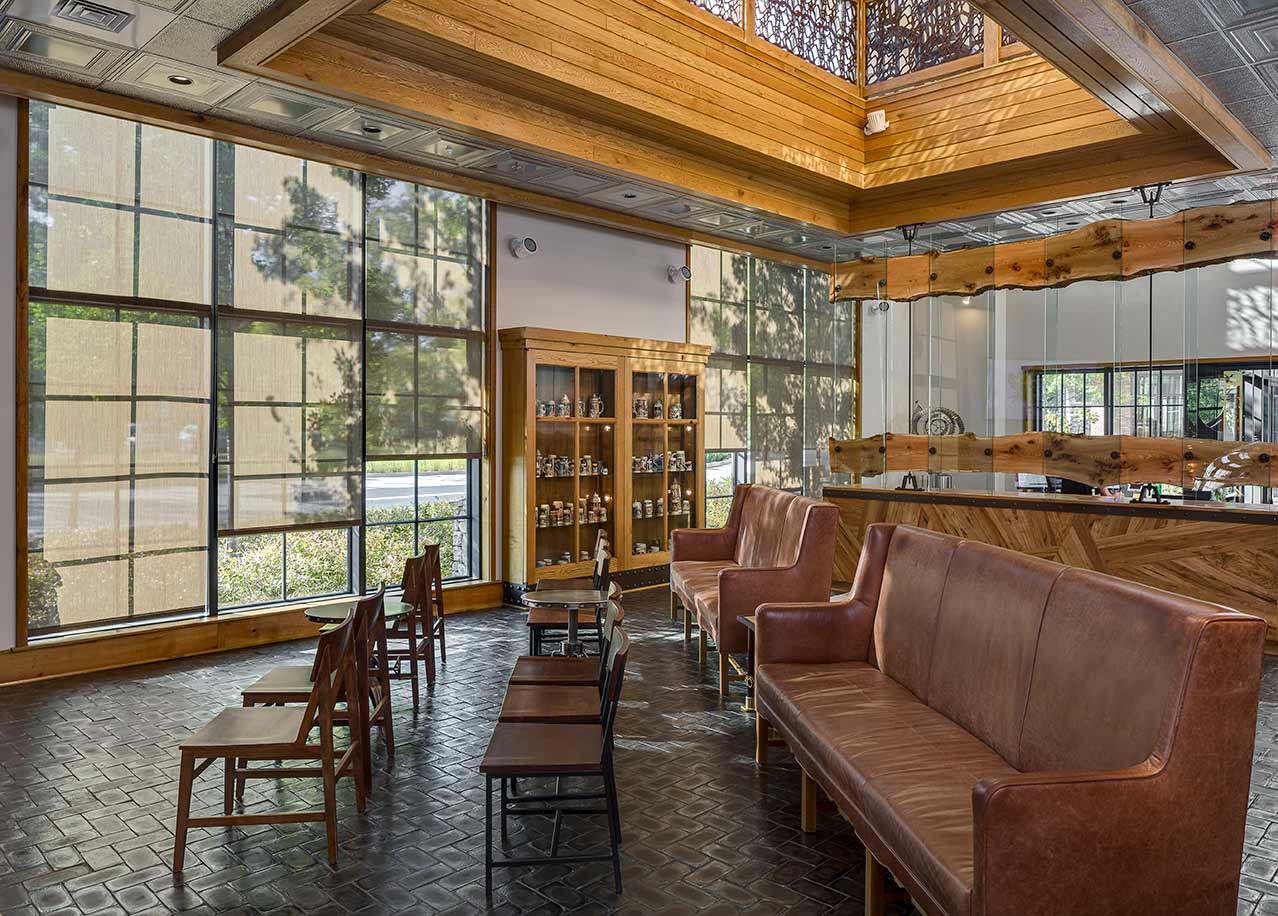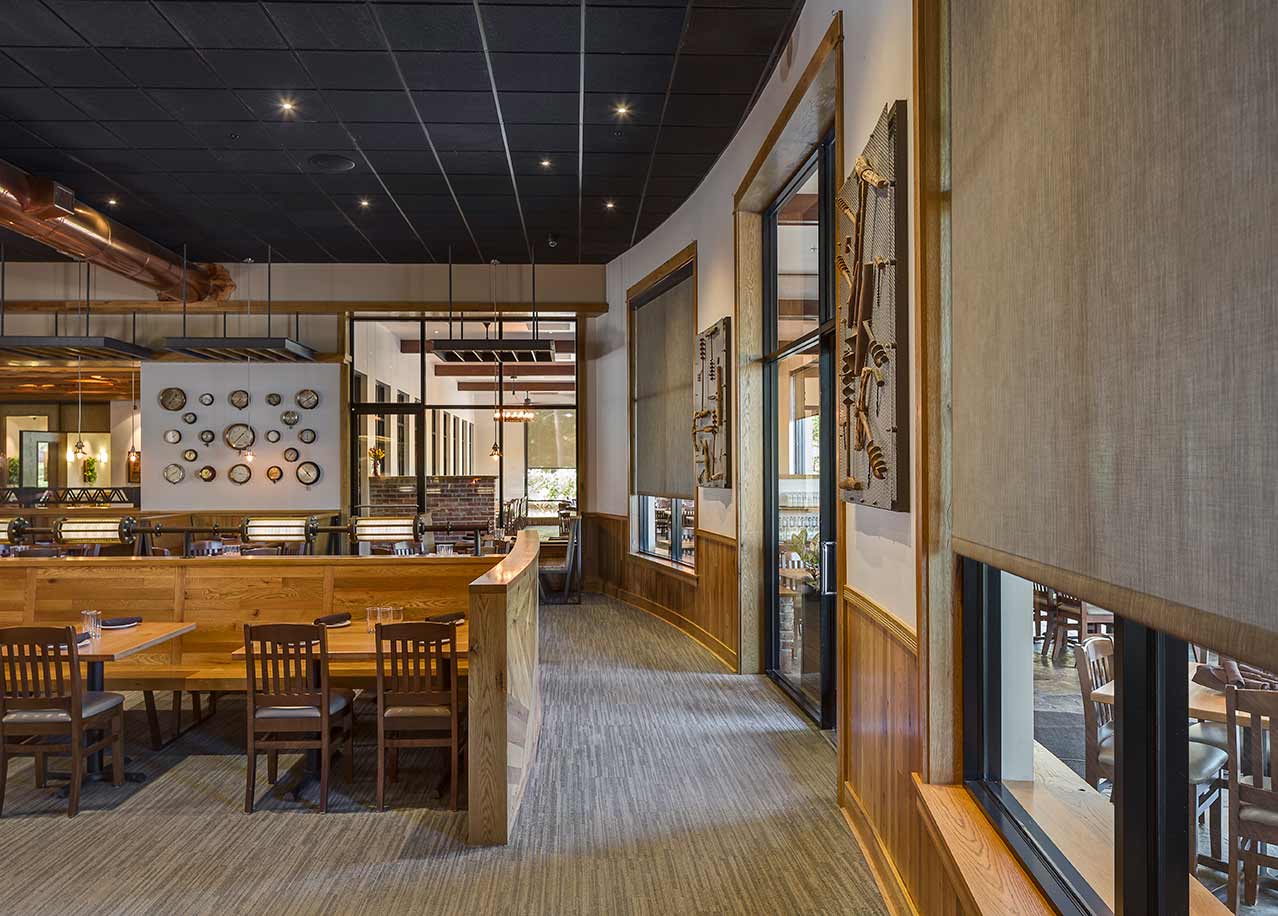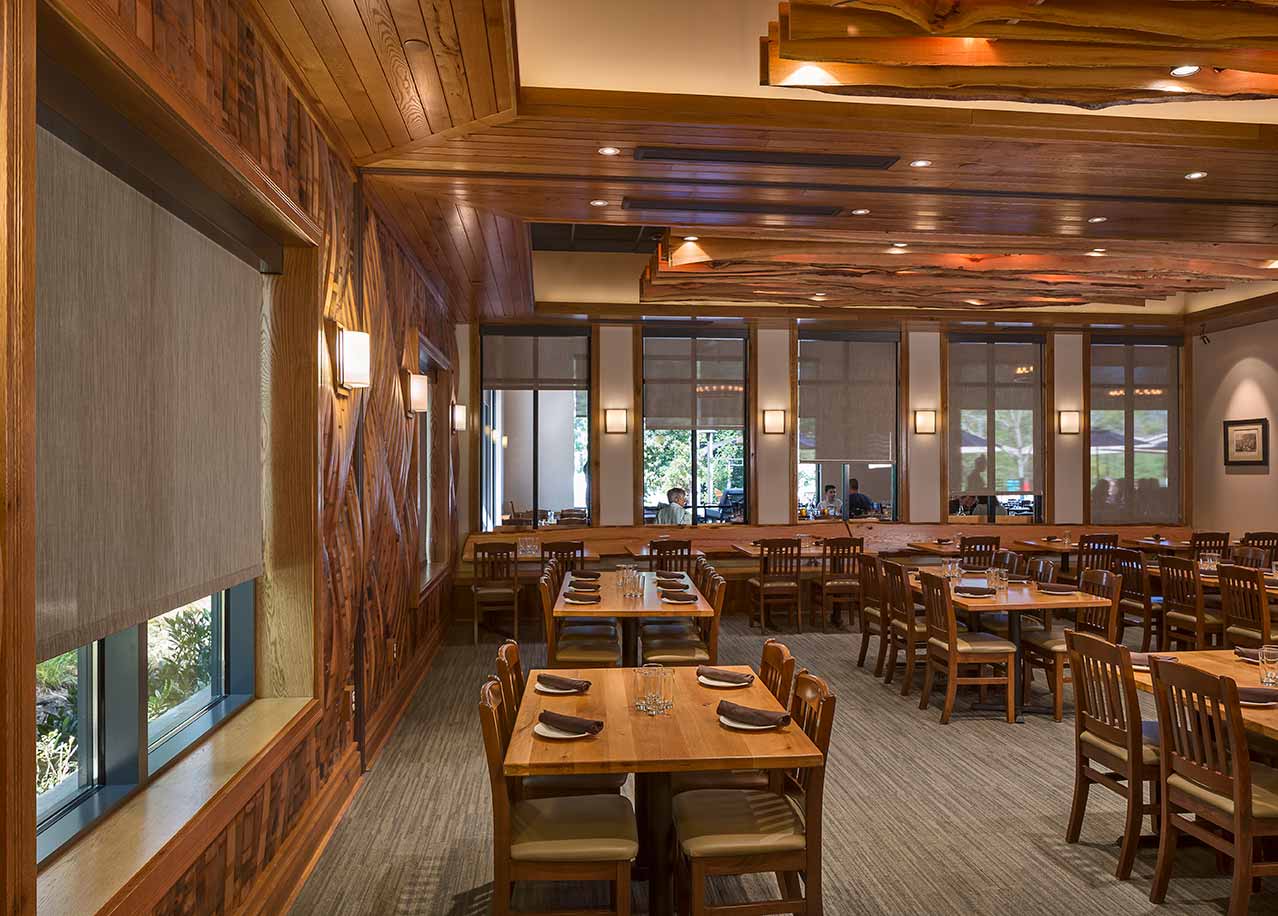From heat retained to how they look, here’s what to know when shading your space.

In terms of sunlight control, thermal performance, and occupant comfort, Mermet’s shade fabric M Screen Deco 5% was a well-crafted solution for the extensive Sierra Nevada Mills River Brewery project. [Photo: Kris Decker & Firewater Photography]

After earning a degree in architecture and working in the field for a few years, both on residential and commercial projects, Colin Blackford took his career in a different direction. He first found himself doing building information modeling at a curtain wall manufacturer, then moved on to a glass manufacturer. He eventually took his experience to Mermet USA, where he now drives innovation for world-class shade fabric manufacturing. As a result, he understands both the technical expectations and the aesthetic ones clients bring to their search for a shade solution. Here, Blackford walks us through what to consider.
Before selecting a shade, you have to ask yourself: What am I looking to achieve? In other words, why am I putting up a shade in the first place? To help answer this question, consider the three main benefits that drive shade installation: thermal performance, aesthetics, and comfort. You can achieve all three of these to some extent, but by determining your number-one priority, you’ll be in a better position to choose the right shade and hardware to meet your needs.

Learn more about how Mermet fabrics create comfortable spaces in the July+August issue of gb&d. [Photo: Kris Decker & Firewater Photography]
When considering thermal performance, you have to first take into account the windows themselves. As the first line of defense against the sun, they will determine how much light is transmitted and reflected into the space. The shade, then, picks up where the glass leaves off in order to protect the building’s occupants from those rays. The amount of sunlight that makes it through will determine the fabric weave and composition that’s right for the room.

[Photo: Kris Decker & Firewater Photography]
Aesthetics and comfort intersect in several ways. For one, a room with reduced glare will surely feel more comfortable, and the color of the fabric determines the glare-reducing properties. Black fabrics typically do a great job of reducing glare, as opposed to lighter materials. White fabrics, on the other hand, don’t typically absorb and re-radiate heat as much as a darker fabric would. And the less a fabric re-radiates, the more comfortable you’ll feel if you’re seated near it. There are, of course, next-generation fabrics that work around these generalizations, but it’s important to have a baseline of knowledge going into the selection process. By understanding your needs and working with a true professional, you can ensure you’re selecting the ideal shades for your project.
Learn more about Mermet and see more gb&d shade fabric stories.
FROM OUR MAY+JUNE 2019 ISSUE


